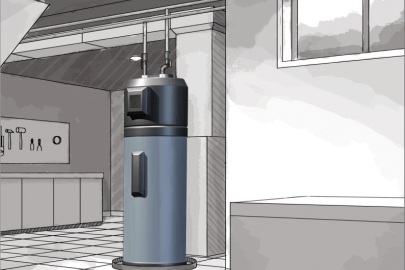What're your thoughts on Tips on Maintaining a Water Heater?

Warm water is important for everyday convenience, whether it's for a refreshing shower or cleaning recipes. To ensure your hot water system runs successfully and lasts much longer, regular upkeep is vital. This article provides useful suggestions and understandings on just how to preserve your home's hot water system to avoid disruptions and pricey fixings.
Introduction
Maintaining your home's warm water system may seem complicated, but with a few straightforward actions, you can guarantee it operates smoothly for years to come. This guide covers everything from recognizing your hot water system to DIY upkeep ideas and knowing when to hire professional aid.
Value of Preserving Your Hot Water System
Normal maintenance not only extends the life-span of your hot water system yet likewise ensures it runs efficiently. Overlooking upkeep can result in lowered effectiveness, higher power expenses, and even early failure of the system.
Signs Your Warm Water System Needs Upkeep
Recognizing when your warm water system needs focus can prevent significant issues. Watch out for signs such as inconsistent water temperature level, weird noises from the heating unit, or rusty water.
Comprehending Your Warm Water System
Before diving right into maintenance tasks, it's handy to comprehend the basic parts of your hot water system. Usually, this consists of the hot water heater itself, pipelines, anode poles, and temperature controls.
Regular Monthly Upkeep Tasks
Regular month-to-month checks can help catch minor problems prior to they rise.
Flushing the Water Heater
Purging your hot water heater eliminates debris buildup, enhancing performance and extending its life.
Checking and Changing Anode Rods
Anode poles protect against deterioration inside the tank. Inspecting and replacing them when worn out is essential.
Inspecting and Adjusting Temperature Level Setups
Adjusting the temperature settings guarantees optimum performance and safety.
Do It Yourself Tips for Maintenance
You can perform a number of maintenance tasks on your own to maintain your warm water system in top condition.
Checking for Leakages
Regularly check pipes and links for leaks, as these can result in water damage and greater costs.
Examining Pressure Relief Valves
Testing the stress relief valve ensures it operates correctly and protects against excessive stress buildup.
Insulating Pipes
Insulating hot water pipes lowers heat loss and can save energy.
When to Call an Expert
While DIY maintenance is valuable, some issues need professional expertise.
Complex Concerns Needing Specialist Assistance
Examples include significant leaks, electrical issues, or if your hot water heater is continually underperforming.
Routine Professional Upkeep Perks
Specialist maintenance can consist of comprehensive assessments, tune-ups, and making sure conformity with safety standards.
Verdict
Routine maintenance of your home's warm water system is essential for performance, long life, and expense financial savings. By adhering to these ideas and recognizing when to look for specialist help, you can guarantee a trustworthy supply of hot water without unanticipated interruptions.
How to Maintain an Instant Hot Water Heater
Before tinkering with your hot water heater, make sure that it’s not powered on. You also have to turn off the main circuit breaker and shut off the main gas line to prevent accidents. Also turn off the water valves connected to your unit to prevent water from flowing into and out of the appliance. 2. When you’re done, you have to detach the purge valves’ caps. These look like the letter “T†and are situated on either side of the water valves. Doing so will release any pressure that has accumulated inside the valves while at the same time avoid hot water from shooting out and burning your skin. 3. When the purge valves’ caps are removed, you have to connect your hosing lines to the valves. Your unit should have come with three hoses but if it didn’t, you can purchase these things from any hardware or home repair shops. You can also get them from retail stores that sell water heating systems. Read the user’s manual and follow it to complete this task properly. When the hosing lines are connected, open the purge port’s valves. 4. You should never use harsh chemical cleaners or solutions when cleaning your unit. Make use of white vinegar instead. It should be undiluted and you’ll probably use about 2 gallons. 5. Now flush your water heater. This task should probably take about 40 minutes. We can’t give you specific directions for this because the procedure is carried out depending on the type, model and brand of your heater. With that being said, refer to the user’s manual. 6. When you’re done draining the unit, you have to turn off the purge port valves again. Remove the hosing lines that you earlier installed on each of the water valves. Put the valve caps (purge port) back in their respective places and be very careful so as not to damage the rubber discs that are found inside these caps. 7. Now that everything’s back in place, check your user’s manual again to find out how to reactivate your water heating system. 8. Once it is working, turn one of your hot water faucets on just to let air pass through the heater’s water supply pipes. Leave the tap on until water flows smoothly out of it. https://www.orrplumbing.com/blog/2014/september/how-to-maintain-an-instant-hot-water-heater/

Hopefully you enjoyed our excerpt on Water Heater Maintenance Tips You Can't Afford to Forget. Thanks for taking the time to read through our blog post. Appreciated our piece? Please share it. Help others find it. Thanks a lot for your time invested reading it.
Click Here